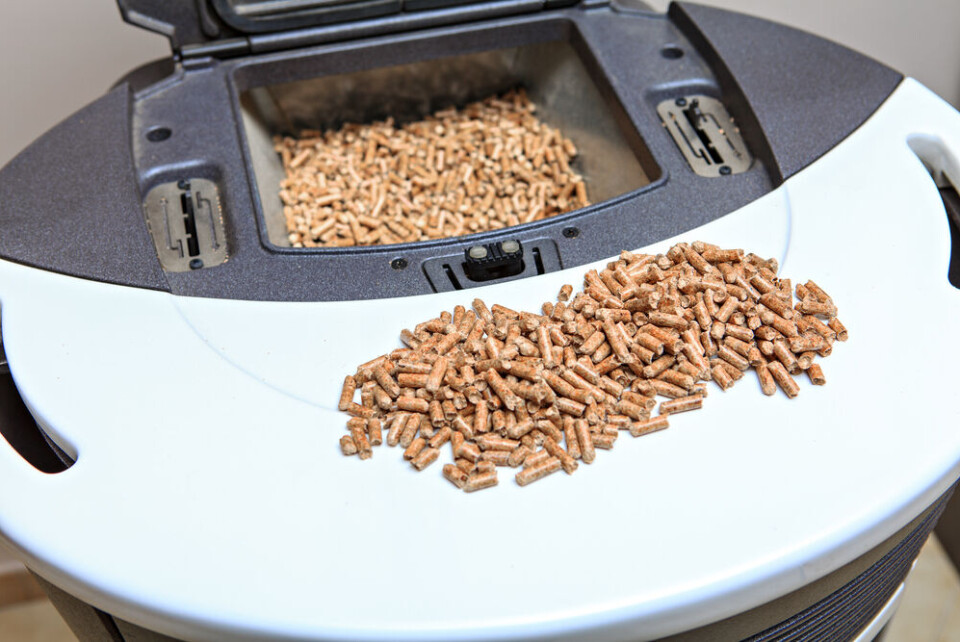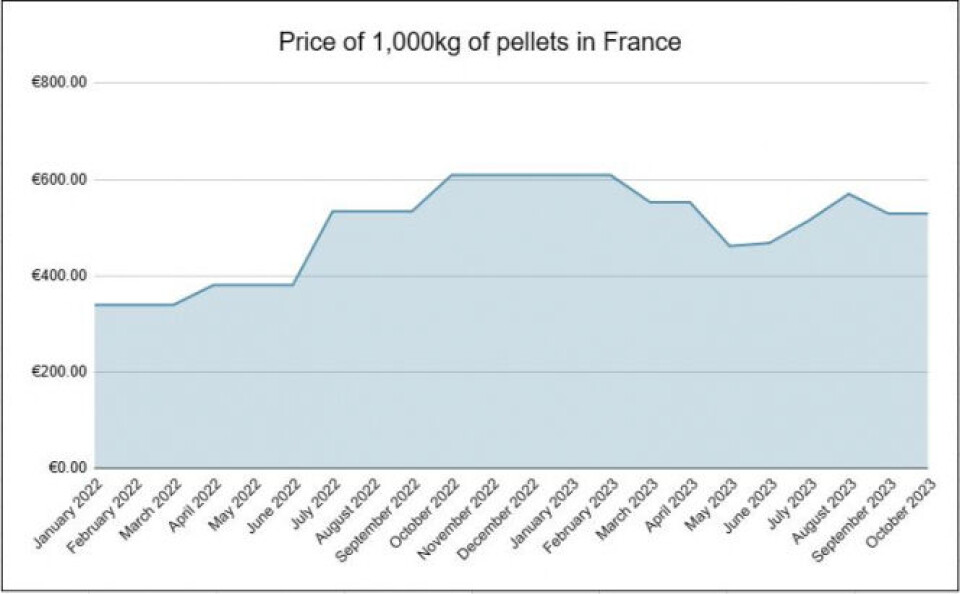-
Wood heating costs rise again this winter - as do the risks for buyers
Over seven million households heat with wood
-
Heat pumps three times more efficient than oil or gas boilers, French study reveals
Pumps could be an economical and ecologically sound heating solution
-
France extends boiler replacement grants
New incentives offer larger grants for modest-income households to switch to efficient heating systems
Wood pellet stoves in France: prices, types, aid, advice
We look in depth at this green alternative to fossil fuel heaters

Wood pellet stoves are an effective way to heat homes, and with several financial incentives available from the state, can still be cost effective despite the rising cost of pellets.
Pellet stoves burn small pieces of compacted saw wood, which are usually 2cm long and between 6 to 8mm wide. Due to the increased surface area of the quantity of combustible, pellets burn faster and hotter than traditional wood burners.
The price of pellets increased after the start of the war in Ukraine due to decreased imports and a lack of local production in France. However the price has stabilised in 2023.
What is the current price of pellets in France?

The war in Ukraine was widely blamed for the steep increase in 2022. Prior to the war, Ukraine, Belarus and Russia supplied 10% of pellets in France. However producers deny that a shortage of raw material was entirely to blame.
“A great deal of the past year’s increased prices was artificial,” said Eric Vial, Director of Propellet - the national association for pellet fuel.
“It was a speculative increase, because with all of the increased energy prices lots of people bought pellets earlier. In March [2022] demand was at 100% of annual production,” he added.
Read more: If you heat French home with wood pellets now may be good time to buy
What are the advantages of pellet stoves?
- Practical: Pellets are easier to purchase and store than heating fuel and wood. They also generate heat faster than electrical heaters, and produce a more durable heat.
- Economical: The price of pellets is still competitive compared to that of heating fuel.
- Ecological : Pellets are sustainable and carbon neutral.
- Financial incentives : France provides several incentives for the installation of pellet burners, and in recent years also sent a chéque-énergie to eligible households to subsidise the purchase of pellets.
- Maintenance: They generate relatively low amounts of soot and dust and so require less upkeep than wood burners.
What are the disadvantages of pellet stoves?
- Purchase price: The initial purchase and installation is expensive. However, help is available in France (see below).
- Pellet price: While the price of pellets has stabilised, it is still significantly higher than in January 2022 and shows no sign of returning that level.
- Size: Pellet stoves are relatively large installations, particularly when compared to electric radiators, but perhaps no more so than wood stoves or heat pumps.
What are the types of pellet stoves?
- Traditional stoves house a small crucible that burns a small amount of pellets in the same way a wood stove would operate. Fumes are evacuated via a chimney and ashes fall into a receptacle beneath the stove.
- Condensation stoves work in the same way as traditional stoves but also make use of the heated water vapour produced by combustion, which in traditional stoves escapes through the chimney.
In condensation stoves, this water vapour is cooled in a condensation chamber, producing additional heat. These stoves can produce 12 to 15% more heat than traditional stoves.
- Silo stoves are either traditional or condensation stoves with a connected pellet reserve, or silo, which feeds directly into the combustion chamber.
These stoves require less attention on a day-to-day basis than more primitive stoves. Large silo stoves only need to be filled once a year.
Depending on the model, there are three ways pellets can be introduced into the combustion chamber:
- Manual feeding is where the user puts the pellets directly into the chamber, as you wood for a wood stove.
- Conveyor screw systems mean that users simply turn a handle to add more pellets.
- Aspiration is a higher-end system whereby the stove draws pellets from its silo, which can be up to 20m away.
Price of purchase and installation
As with all combustion heating systems in France, it is recommended to use a professional to install the system.
Legally, you can install both the chimney and stove yourself, however in case of a fire your home insurance may refuse to pay out if the work was not done by a certified chauffagist.
Pellet stoves are often sold with installation included. The prices here reflect this:
- Traditional pellet stove, between €8,000 and €15,000
- Automatic silo pellet stove, between €10,300 and €21,000
- Condensation pellet stove, between €12,000 and €18,000
- Condensation silo pellet stove, between €14,000 and €23,000
The starting prices of traditional pellet stoves (installation not included) are from €3,000.
It is also obligatory to have your chimneys cleaned in France. The exact frequency of this is set out in a departmental decree. You can find further information from your local mairie.
Read more How much should we expect to pay to get a chimney swept in France?
What financial help is available to buy a pellet stove in France?
First, note that all financial help is dependent on using a professional service to fit the stove. The company must be certified as Reconnu Garant de l'Environnement, RGE, and must provide you with an estimate before the work and a bill after.
There are three types of help available:
- Ma Prime Rénov’ can cover up to €2,500 for installing a pellet stove. However, this bonus is means-tested.
- Le Coup de pouce Chauffage can cover up to €4,000 for installing a pellet stove on condition that it is replacing a less efficient, coal, gas or oil system. It is also means- tested.
- L’éco prêt à taux zéro is an interest free loan of up to €30,000, which can be used to finance a pellet stove. There are no conditions of revenue.
Read more: Can I get financial help towards replacing boiler at my French home?
Related articles:
If you heat French home with wood pellets now may be good time to buy
Rules get tougher on badly insulated homes in France
MaPrimeRenov: How to claim grant for energy upgrades in French home
























